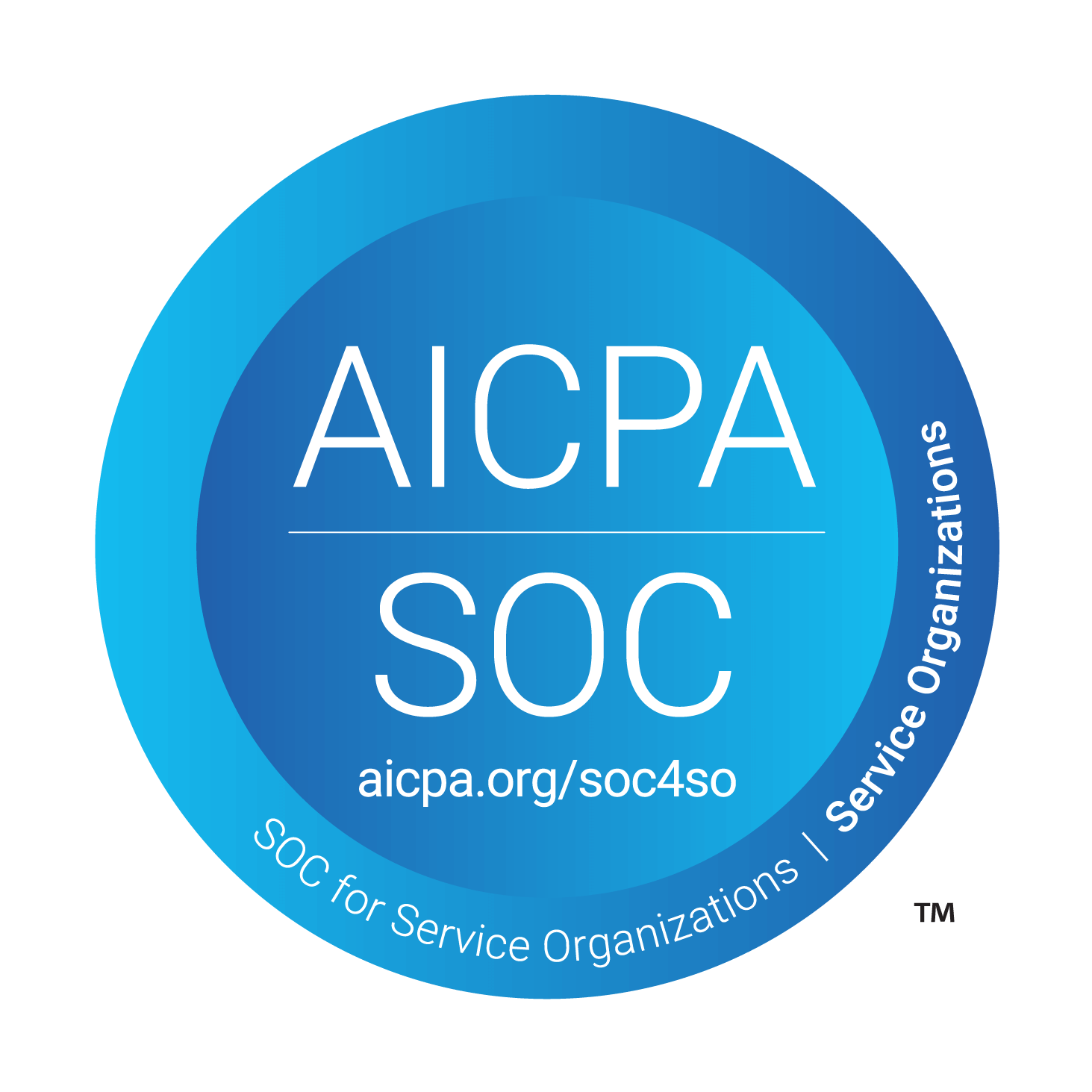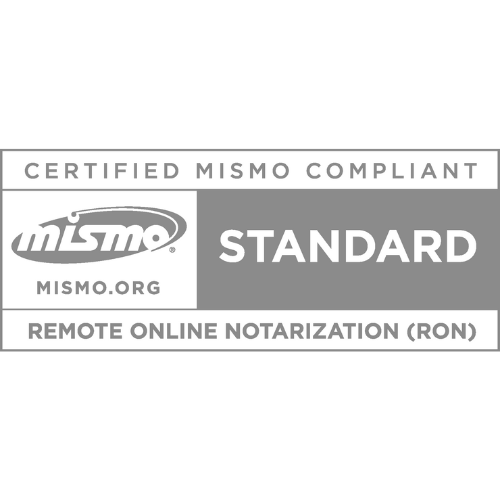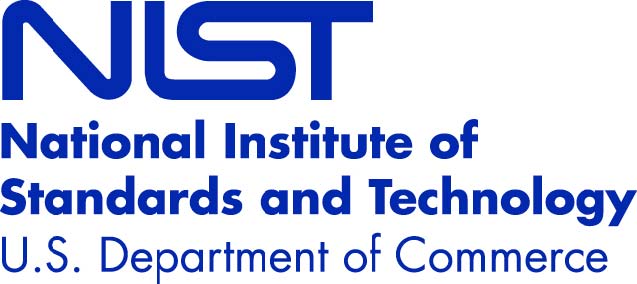Disclaimer: This blog post is for informational purposes only and does not constitute legal advice. Please consult an attorney for guidance on specific laws regarding Remote Online Notarization (RON), digital signatures, and related legal matters. As laws concerning RON and notarization are subject to frequent changes, it is advisable to verify current regulations with your local government.
Closing a loan is one of the most critical parts of the mortgage process, but let’s face it, coordinating in-person signings can slow things down and create friction for everyone involved.
That’s where Remote Online Notarization for mortgage transactions comes in. By moving the notarization process online, RON can help reduce turnaround times, increase flexibility for your borrowers, and support a more streamlined closing experience. Instead of scheduling around business hours or waiting on physical paperwork, borrowers may complete notarizations from wherever they are, often in just a few clicks.
For lenders, Remote Online Notarization for mortgage closings offers more than just convenience. It often helps improve operational efficiency, reduce errors, and support compliance with evolving borrower expectations in a digital-first world. While it’s not a one-size-fits-all solution, RON is quickly becoming a valuable tool in the modern lending toolkit.
Understanding Remote Online Notarization (RON)
So, what exactly is Remote Online Notarization, or RON? In short, it’s like a traditional notarization, but instead of meeting with a notary in person, everything happens through a secure video call on your computer or smartphone. It’s a modern, digital approach that helps bring convenience and flexibility to a process that’s often been anything but.
For mortgage lenders, Remote Online Notarization can be a helpful tool to meet the evolving expectations of today’s borrowers. Instead of asking clients to find a notary, travel to a location, and deal with stacks of paperwork, RON allows them to complete notarizations remotely, often from the comfort of home. That kind of accessibility may reduce friction at closing and support a smoother borrower experience overall.
Here’s how it works: A RON platform uses secure, real-time audio-visual technology so the notary and signer can see and hear each other clearly. Before the session or during your session, identity verification steps, such as credential analysis and knowledge-based authentication, help ensure the signer is who they claim to be. From there, documents are signed electronically, and the notary applies an electronic seal, making the notarization official and tamper-evident.
According to the National Notary Association , this process can preserve the integrity of the notarial act when done in accordance with state laws. While it’s not a fit for every transaction, RON is increasingly becoming part of the digital toolkit for lenders who want to offer their borrowers more flexible options at closing.
Why Remote Online Notarization for Mortgage Closings is Gaining Traction
Think back to the traditional mortgage closing process, paperwork piled high, back-and-forth scheduling, trips to the title office, and a deadline that always seems too close for comfort. It’s no wonder many borrowers and lenders alike consider it one of the most stressful parts of buying a home. The coordination, document management, and time constraints often create unnecessary tension in what should be an exciting milestone.
That’s why Remote Online Notarization for mortgage closings is starting to gain real momentum. As more lenders adopt digital solutions, RON is becoming an option that borrowers increasingly look for and appreciate. It may not be the answer for every transaction, but it often helps create a more flexible, efficient experience for everyone involved.
Convenience and Accessibility
One of the biggest draws of RON is the convenience it offers. Borrowers may sign critical mortgage documents, like the promissory note, from their own kitchen table, office, or wherever they have internet access. There’s no need to take time off work or drive across town to meet a notary.
For lenders, this flexibility helps reduce scheduling conflicts and delays, making the process easier to coordinate across multiple parties. It may also help borrowers who live in rural areas, have limited transportation, or face mobility challenges. RON platforms are designed to meet signers where they are, literally and digitally.
Speed and Efficiency
Traditional closings can be time-consuming, with physical documents that need to be printed, signed, shipped, and filed. RON often speeds this up. Since documents are digital and the entire session happens online, signings may be completed more quickly, sometimes helping to move the loan toward funding without unnecessary holdups.
Lenders can also benefit from reduced document handling, quicker turnarounds, and fewer manual errors, especially when using platforms designed for streamlined eClosings.
Cost Savings
Remote Online Notarization can also lead to savings. Borrowers may avoid travel-related costs like gas or parking. Lenders and title companies might reduce printing, shipping, and administrative overhead.
While there’s typically a fee for the RON session itself, charged by the platform or provider, many find it’s offset by the reduction in related expenses. For some, it may offer a more cost-effective way to finalize a real estate transaction without compromising on quality or compliance.
Enhanced Security
Security is a common concern, and understandably so. RON platforms often use multiple layers of protection to help safeguard the process. This includes advanced identity verification, credential analysis, knowledge-based authentication, and tamper-evident digital signatures. Each session is recorded, creating a detailed audit trail that can be helpful for compliance and accountability.
For lenders, this digital documentation adds transparency and traceability to every transaction. It may also help reduce the risk of fraud or identity-related errors, especially when compared to in-person closings.
Better Borrower Experience
At the end of the day, a smoother experience for the borrower often means a smoother process for the lender. Remote Online Notarization for mortgage closings can take a lot of stress off the table, helping borrowers feel more in control, less rushed, and more confident during a major financial event.
Borrowers frequently cite RON’s convenience, simplicity, and modern feel as key advantages, and in a world where client satisfaction drives retention and referrals, that matters. The ease of use and user-friendly design of many RON platforms may even encourage borrowers to share their positive experience with others.
How Does Remote Online Notarization for Mortgage Transactions Work?
It sounds like a great concept, but how does Remote Online Notarization for mortgage transactions actually work in practice? Fortunately, the process is designed to be user-friendly and guided, often through a secure closing platform selected by your lender or title company. While the exact experience can vary depending on the RON provider, such as NotaryCam, here’s a general idea of what the process may look like:
Document Preparation
Your lender or title company starts by preparing all required closing documents electronically. These are the same documents you’d sign in a traditional closing, just in digital form. That includes everything from disclosures to the mortgage (Note – the promissory note may still need to be wet signed, unless the lender is using an eNote. This is due to rules of negotiable instruments).
Once ready, the documents are uploaded to a secure Remote Online Notarization platform. Signature fields are clearly marked, and the system often guides the signer through each step, helping to reduce confusion or missed entries.
Platform Selection
Your closing agent or lender typically partners with a specific RON platform. These platforms are purpose-built to handle notarizations remotely, using encrypted video sessions and secure digital workflows.
The chosen technology provider plays a key role in managing the identity verification, document execution, and application of the electronic notary seal. The right platform can help streamline the closing experience for both borrowers and lenders.
Identity Verification
Before the notarization begins, the signer must complete identity verification. This process often includes:
- Credential Analysis: The signer takes photos of a government-issued ID (like a driver’s license or passport) using a webcam or smartphone. The platform then scans and verifies the document’s security features.
- Knowledge-Based Authentication (KBA): The signer answers multiple-choice questions based on personal history, pulled from public and credit data sources.
These steps help confirm the signer’s identity before the remote notarization can proceed. Organizations like the Mortgage Bankers Association support this approach as part of maintaining transaction integrity.
The Live Notarization Session
After identity verification, the signer is connected to a commissioned remote notary via a live, secure two-way audio-video call. During the session, the notary:
- Confirms the signer’s identity again
- Ensures the signer is signing of their own free will
- Observes the electronic signing
The experience is similar to an in-person meeting, just conducted securely online. Signers can ask questions during the session, which helps maintain the integrity of the notarial act.
Electronic Signing and Sealing
Using a mouse, stylus, or touchscreen, the signer electronically signs the mortgage documents. Once complete, the notary applies their electronic notary seal and digital certificate to the documents. This step finalizes the notarization and makes the document tamper-evident, meaning any post-signing changes can be detected.
Secure Storage and Retrieval of Documents
After the notarization is complete, the platform stores the signed documents for a period of time and a recording of the session in a secure digital environment for a period required by law, often 10 years. Borrowers, lenders, and other authorized parties are typically granted access to download or retrieve the finalized documents.
This digital storage approach helps reduce paper clutter and may simplify document retrieval throughout the life of the loan.
Beyond RON: Understanding the Different Mortgage Closings
Mortgage closings aren’t one-size-fits-all anymore. As technology has evolved and borrower expectations have shifted, the industry has adapted with new ways to complete the closing process. Today, most closings fall into one of three categories: traditional, remote, or hybrid. Understanding the differences can help lenders choose the best approach for each transaction, and help borrowers feel more prepared and confident.
Traditional Closings
This is the classic approach. The borrower meets in person, often at a title company, attorney’s office, or bank, to review and sign all closing documents by hand. A notary public is physically present to witness the signatures and apply a wet-ink notary stamp.
When it’s used:
- States that do not permit Remote Online Notarization
- Transactions involving complex legal requirements
- Borrowers who prefer a face-to-face process
Pros: Familiar process, immediate access to all parties
Cons: Less flexible, requires travel and in-person coordination
Remote Closings
Remote closings are fully digital or hybrid transactions that allow borrowers to complete mortgage documents without needing to be physically present. These often include Remote Online Notarization (RON), a secure process that uses two-way video, identity verification, and electronic signatures to notarize documents online.
However, not all remote closings use RON. In some cases, lenders may use Remote Ink-Signed Notarization (RIN), where documents are signed with ink and notarized remotely over video, but then mailed back for processing.
For a truly end-to-end digital closing, an eNote (electronic promissory note) is also required. This allows the loan to be originated, signed, and stored electronically, supporting faster delivery to the secondary market.
When it’s used:
- In states that authorize RON
- When speed, convenience, or borrower accessibility is a priority
- For out-of-state or international borrowers
Pros: High flexibility, may reduce delays, borrower convenience
Cons: Requires technology access and platform familiarity
Hybrid Closings
Hybrid closings combine elements of both traditional and remote processes. Typically, some documents are signed electronically (eSign), while others—such as the promissory note or documents requiring notarization—are signed in person or with a mobile notary.
When it’s used:
- When eSign is allowed but RON is not
- For borrowers who are comfortable with some digital tools but want human interaction
- When only certain documents require notarization
Pros: Balances flexibility and compliance, good transitional option
Cons: Still involves some in-person coordination or mailing of documents
Each approach offers unique benefits, and the right fit may depend on state laws, borrower preferences, and the lender’s workflow. As adoption of Remote Online Notarization for mortgage closings continues to grow, many lenders are exploring hybrid and remote options to better meet their clients’ needs while staying aligned with compliance requirements.
Is Remote Online Notarization Legal and Accepted for Mortgages?
One of the most common questions lenders and borrowers ask is: Is Remote Online Notarization (RON) even allowed for mortgage transactions? The short answer is yes, but it depends on your state.
Many states have passed laws authorizing notaries public to perform RON under specific conditions. However, the details of those laws can vary widely. Some states allow notaries to perform remote notarizations regardless of where the signer is located, while others may require that either the notary or signer be physically within the state at the time of notarization. There may also be unique rules about which platforms can be used, how identity is verified, or how session recordings must be stored.
RON Laws Are Not One-Size-Fits-All
Even among states that permit RON, the requirements aren’t uniform. Some states have adopted permanent laws, while others may still be operating under temporary measures or are in the process of adapting their legal framework. Because of these differences, it’s important to understand the specific legal requirements in the state where the notary is commissioned—and, in some cases, where the signer or property is located.
Interstate Recognition Helps, But Local Rules Still Apply
Most states recognize notarizations that are performed legally in another state. This concept, known as interstate recognition, is one reason Remote Online Notarization for mortgage transactions has gained broader acceptance. That said, local jurisdictions, such as county recorder offices, may still have their own requirements when it comes to accepting e-signed and e-notarized documents. Some may still require ink signatures or have limitations around electronic recording.
RON and the Mortgage Industry
The growing support from major industry players, including government-sponsored enterprises, has made it easier for lenders to adopt RON. These entities have issued guidance that often allows the use of RON for loans they purchase or guarantee, encouraging broader adoption across the mortgage ecosystem.
Still, it’s essential for lenders to confirm:
- Whether the borrower’s location supports RON
- If the recording office will accept e-signed and e-notarized documents
- That the RON platform being used meets applicable legal and security standards
Professional associations and title organizations frequently publish updates and best practices that can help ensure compliance.
In short, Remote Online Notarization for mortgage closings is becoming more accessible, but it’s not universal. Checking local laws and recording requirements is a key part of successfully using RON in any transaction.
Key Considerations for Notaries Offering RON Mortgage Services
If you’re a notary public considering expanding your services to include Remote Online Notarization for mortgage transactions, there are a few important factors to keep in mind. RON is more than just stamping a digital version of a document, it involves specialized authorization, technology, and ongoing compliance.
Authorization and Training
Most states require notaries to complete additional steps before offering RON services. This often includes applying for a remote notary commission or endorsement, completing approved training, and registering with a state agency. The requirements vary, so it’s important to check your specific state’s laws before getting started.
Technology Requirements
RON relies on secure, real-time communication and digital tools. To perform remote notarizations, you’ll need:
- A reliable computer or laptop
- Stable internet connection
- Webcam and microphone
- A RON platform that complies with your state’s requirements
These platforms typically provide identity verification tools (such as credential analysis and knowledge-based authentication), video session management, and the ability to apply your electronic notary seal and digital certificate. Becoming comfortable with the platform’s features and workflows may help ensure your sessions are smooth and compliant.
Understanding Compliance Standards
Remote online notarizations are subject to strict security and recordkeeping standards, especially in mortgage transactions. You may be required to:
- Record and securely store video sessions for a set period
- Maintain audit trails and logs of each notarization
- Use secure, state-approved methods for identity verification
- Protect your electronic seal and digital certificate from misuse
Because these rules can change, staying informed about both state-specific regulations and national guidance is essential. Organizations like your state’s land title association or the American Land Title Association (ALTA) often publish helpful updates and best practices for notaries working in real estate and mortgage contexts.
Ongoing Education and Professionalism
The field of Remote Online Notarization for mortgage transactions continues to evolve. New technology, regulatory updates, and industry expectations are shaping how notaries work in the digital space. Keeping up with these changes through continuing education, platform updates, and networking with other notaries may help you provide a better experience.
How to Support Borrowers During the RON Process
For many borrowers, Remote Online Notarization for mortgage transactions is a new, and sometimes unfamiliar, experience. While the process is designed to be user-friendly, having the right support along the way can make a big difference in how borrowers feel about their closing.
Whether you’re a lender, closing agent, or notary, here are a few ways you can help borrowers navigate RON with confidence:
Set Expectations Early
Clear communication goes a long way. Let borrowers know in advance that the closing will happen online and walk them through what that means. Explain that they’ll be meeting with a notary over video, signing documents electronically, and verifying their identity with a secure system. Providing a short checklist of what they’ll need (such as a valid photo ID, webcam, and internet access) may help reduce confusion on the day of the closing.
Provide a Simple Walkthrough
A step-by-step guide, or even a brief video walkthrough, can go a long way in helping borrowers feel comfortable. Most RON platforms offer demo sessions or visual guides that you can share with your clients. The more familiar they are with the process, the smoother the experience will be. If your RON provider has a help center or support line, make sure borrowers know how to access it.
Offer Tech Support or a Test Run
Not everyone is comfortable using new technology, especially for something as important as signing mortgage documents. Offering a test session (even a brief one) can help borrowers verify that their camera, microphone, and ID verification system are working properly before the actual signing. Lenders or closing agents can also designate a point of contact in case any tech issues come up during the session.
Stay Available and Patient
During the live RON session, it’s common for borrowers to have last-minute questions or need a few extra minutes to review documents. Encourage notaries and closing agents to be patient and approachable. Reassure borrowers that they can ask questions at any point, just like they would during an in-person closing (but please note that notaries cannot provide legal advice).
Follow Up After the Signing
Once the session is complete, borrowers may want to know what’s next, such as when they’ll receive copies of the documents or when funding will occur. A quick follow-up email or call reinforces professionalism and helps build borrower confidence in the remote closing process.
Supporting borrowers through Remote Online Notarization for mortgage closings isn’t just about getting documents signed, it’s about helping them feel secure, informed, and valued throughout a digital process that may be new to them. The more confident and supported your borrowers feel, the more likely they are to view their closing, and your organization, positively.
The Future of Mortgage Closings with RON
Looking ahead, Remote Online Notarization (RON) appears likely to play an even bigger role in the future of mortgage closings. The combination of convenience, efficiency, and enhanced security often makes RON an attractive option for borrowers, lenders, and settlement agents alike. As more states adopt permanent RON laws and technology platforms continue to evolve, broader industry adoption seems well within reach.
But this shift isn’t just about digitizing one part of the process—it’s part of a much larger trend toward modernizing the entire mortgage experience. RON supports a more flexible and accessible closing, which may help reduce friction for borrowers and improve workflow efficiency for lenders. It also aligns with growing consumer expectations for digital-first solutions across financial services and real estate.
While RON adoption accelerated out of necessity during the pandemic, when many jurisdictions issued emergency orders to allow remote closings, the momentum hasn’t slowed. Many in the industry now see RON as a long-term solution, not just a short-term workaround. As platforms integrate new technologies such as artificial intelligence for tasks like document review or identity verification, the potential for a fully digital, end-to-end mortgage process continues to grow.
Industry organizations like the American Land Title Association (ALTA) and the Mortgage Bankers Association (MBA) play a key role in shaping policy, setting best practices, and guiding adoption. Their ongoing efforts help ensure that RON solutions meet both legal standards and practical needs, laying the groundwork for secure, scalable digital closings nationwide.
As the regulatory environment continues to mature and technology keeps advancing, Remote Online Notarization for mortgage transactions may become less of an exception and more of the norm. For lenders, title professionals, and notaries, staying informed and adaptive will be essential to meeting the needs of tomorrow’s borrowers, today.
Conclusion
The journey to homeownership is a major milestone for your borrowers, and the closing process plays a key role in how they experience it. Remote Online Notarization for mortgage transactions offers lenders a modern way to streamline one of the most traditionally time-consuming parts of the loan process: document execution and notarization.
By enabling borrowers to sign and notarize documents securely online, RON can help reduce delays, ease scheduling challenges, and create a more flexible, digital-friendly closing. It also supports your team with fewer paper-based bottlenecks and greater efficiency across departments.
As more states adopt supportive legislation and technology platforms continue to improve, Remote Online Notarization for mortgage closings is quickly becoming a practical, scalable solution for lenders looking to meet borrower expectations while maintaining compliance and operational control.
FAQs for Lenders about Remote Online Notarization for Mortgage
Is Remote Online Notarization (RON) accepted for mortgage closings?
RON is authorized in many states, but requirements vary. Most states allow notarizations performed legally in another state to be recognized. Lenders should confirm state-specific rules and ensure their title partners and county recorders accept e-notarized documents.
Do Fannie Mae and Freddie Mac accept RON for the loans they purchase?
Yes, both Fannie Mae and Freddie Mac support the use of RON for eligible loans, provided the notarization meets their guidelines, complies with applicable laws, and includes an electronic promissory note (eNote). Needs to be an eNote: without it, a fully digital closing is not possible. Always check for updates on accepted platforms and compliance standards.
What technology or platforms are needed to facilitate RON closings?
Lenders typically partner with RON-approved platforms (such as NotaryCam) that offer secure video conferencing, identity verification, e-signature capabilities, and electronic notary seals.
How does RON impact the borrower experience?
RON often improves borrower satisfaction by offering flexibility, reducing travel, and making it easier to close on time. It can be particularly helpful for out-of-state clients or borrowers with tight schedules.
Are there security or compliance risks with RON?
RON platforms use multi-factor identity verification, encrypted video sessions, and tamper-evident digital seals. While no system is risk-free, these features help lenders maintain strong compliance and reduce the likelihood of fraud when implemented properly.
5 FAQs for Borrowers about Remote Online Notarization for Mortgage
What is Remote Online Notarization (RON)?
Remote Online Notarization allows you to meet with a notary via secure, live audio video session to sign and notarize your mortgage documents digitally—from anywhere with internet access.
Is RON secure and valid for my mortgage closing?
Yes. When performed in accordance with state law and lender requirements, RON is a legally valid way to notarize mortgage documents. Your session will be recorded, and your identity will be verified before signing.
What do I need to complete a RON session?
You’ll need a computer with a webcam and microphone, a strong internet connection, a government-issued photo ID, and a quiet, well-lit space to complete your notarization.
Can I ask questions during the RON session?
Absolutely. The notary is there to help, just like during an in-person closing. You can ask questions, but your notary cannot explain the document to you or provide legal advice.
Do I get a copy of my documents after signing?
Yes. Once your notarization is complete, you’ll receive digital copies of your signed and notarized mortgage documents. Your lender or title company can also provide additional copies if needed.








 Your Privacy Choices
Your Privacy Choices


